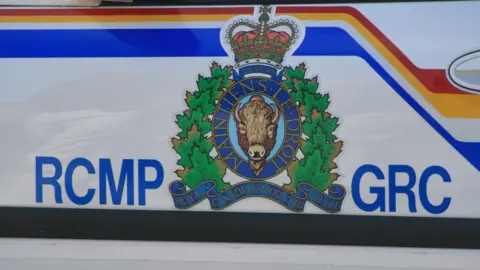As wildfires continue to ravage Manitoba, the province declared a second state of emergency this year, marking a severe escalation in a raging fire season that threatens to be the most destructive in over three decades. As of Friday morning, officials reported more than 100 active wildfires, with large portions of the province engulfed, prompting the evacuation of thousands.
This year's fires have consumed approximately 2.5 million acres of land, with alarming projections indicating that Manitoba could surpass land burned in the last recorded severe wildfire season of 1994. Compounding the situation, a severe thunderstorm warning was issued in Winnipeg, further complicating firefighting efforts.
Current mandatory evacuation orders affect nine communities, including critical zones such as the town of Snow Lake and the Garden Hill First Nation. The premier of Manitoba, Wab Kinew, emphasized the urgency for more shelter facilities to accommodate those forced to flee their homes.
On Thursday alone, over 4,000 evacuees from the Garden Hill reservation were relocated to makeshift shelters, including the Billy Mosienko Arena and RBC Convention Center in Winnipeg. To support these efforts, the federal government dispatched a military plane for transport logistics, according to emergency management minister Eleanor Olszewski.
Adding to the coordination efforts, American firefighters have been deployed to assist in battling the blazes. However, Premier Kinew expressed frustration with U.S. Congress members who have attempted to politicize the situation. Following a letter from Republican representatives from Minnesota and Wisconsin urging Canadian authorities to address the wildfire impacts causing smoke and ash in the U.S., Kinew noted the insensitivity of their comments, given the loss of life in Manitoba.
Previous months have already seen tragic losses due to wildfires, including two fatalities and evacuations affecting 30,000 residents. As conditions worsen, Manitoba's government remains focused on protecting its communities amid these intensified natural disasters.
This year's fires have consumed approximately 2.5 million acres of land, with alarming projections indicating that Manitoba could surpass land burned in the last recorded severe wildfire season of 1994. Compounding the situation, a severe thunderstorm warning was issued in Winnipeg, further complicating firefighting efforts.
Current mandatory evacuation orders affect nine communities, including critical zones such as the town of Snow Lake and the Garden Hill First Nation. The premier of Manitoba, Wab Kinew, emphasized the urgency for more shelter facilities to accommodate those forced to flee their homes.
On Thursday alone, over 4,000 evacuees from the Garden Hill reservation were relocated to makeshift shelters, including the Billy Mosienko Arena and RBC Convention Center in Winnipeg. To support these efforts, the federal government dispatched a military plane for transport logistics, according to emergency management minister Eleanor Olszewski.
Adding to the coordination efforts, American firefighters have been deployed to assist in battling the blazes. However, Premier Kinew expressed frustration with U.S. Congress members who have attempted to politicize the situation. Following a letter from Republican representatives from Minnesota and Wisconsin urging Canadian authorities to address the wildfire impacts causing smoke and ash in the U.S., Kinew noted the insensitivity of their comments, given the loss of life in Manitoba.
Previous months have already seen tragic losses due to wildfires, including two fatalities and evacuations affecting 30,000 residents. As conditions worsen, Manitoba's government remains focused on protecting its communities amid these intensified natural disasters.




















